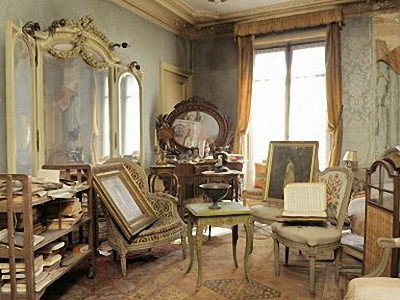Leonardo da Vinci's masterpiece, the Mona Lisa, became famous after being stolen by a former Louvre employee.

Leonardo da Vinci's masterpiece ' Mona Lisa ,' on display at the Louvre Museum in France, is known as the most famous work of art in the world, but until the early 20th century, it was one of the least known works of art in the general public. It is said that what made 'Mona Lisa' famous was the theft that occurred in 1911, and the history-related media History Channel has compiled the details of this theft.
The Heist that Made the Mona Lisa Famous | HISTORY
On the evening of Sunday, August 20, 1911, a small, mustachioed man entered the Louvre in Paris. Security at the museum was lax at the time, allowing the man to easily hide in a storeroom and spend the night there. At around 7:15 the next morning, when the museum was closed and there were few people around, the man emerged from the storeroom wearing the same white apron as museum staff, looked around, then made his way to the Mona Lisa, removed the painting from the wall, carried it up a nearby staircase, and removed the wooden canvas from its protective glass case.
However, the door to the courtyard, which was his escape route, was locked, so the man placed the Mona Lisa, wrapped in a white cloth, on the floor and tried to remove the doorknob. A plumber from the museum appeared, but mistaking him for a museum employee who had been locked up, helped him open the door. The criminal thanked him and left, hiding the Mona Lisa under his apron as he left the museum.
The theft was discovered around noon the following day. When the artist visited the museum and asked a security guard where the Mona Lisa was, he discovered that only nail marks remained in the original place where it was displayed. The glass case was then discovered behind a staircase.
The incident shocked France, and the Parisian magazine Illustration asked , 'What daring criminal, what mysterious character, what crazy collector, what fanatic committed this robbery?' A large number of detectives were dispatched to the Louvre, fingerprints were taken, witnesses were interviewed, vehicles, passengers, and pedestrians were searched at checkpoints, and police distributed wanted posters featuring the Mona Lisa's enigmatic smile. The museum reopened a week after the theft was discovered, and thousands of people flocked to see the painting's remains.

The culprit was a man named Vincenzo Peruggia, who had previously worked as a craftsman at the Louvre and had been involved in making the protective case for the Mona Lisa.

He was 29 years old at the time and hid the stolen paintings in a suitcase in an apartment in the suburbs of Paris for about two years. Later, Perugia said, 'I was captivated by her smile and admired my treasure every night.' As a former employee, Perugia was questioned twice, but was not considered a major suspect.
In December 1913, Perugia wrote to Florentine art dealer Alfredo Geri under the false name 'Leonardo', offering to return the Mona Lisa to Italy. After consulting with Giovanni Poggi, director of the Uffizi Gallery, Geri agreed to a meeting in Florence. In a hotel room, Perugia found an item wrapped in red cloth, which was undoubtedly the Mona Lisa. Geri pretended to agree to the purchase, but in fact, after verifying the painting's authenticity, he notified the authorities, and Perugia was arrested on the afternoon of December 11th.
At the trial, Perugia claimed that he was trying to return to his home country a painting that had been looted from Italy during the Napoleonic era. In reality, however, the Mona Lisa had been brought to France by Da Vinci in 1516 and legitimately purchased by
The Mona Lisa was returned to the Louvre in January 1914, and more than 120,000 people came to view it in the first two days. Today, protected by bulletproof glass and a temperature-controlled display case, it continues to attract an estimated 8 million visitors a year.

by InSapphoWeTrust from Los Angeles, California, USA
Related Posts:
in Art, Posted by log1i_yk







